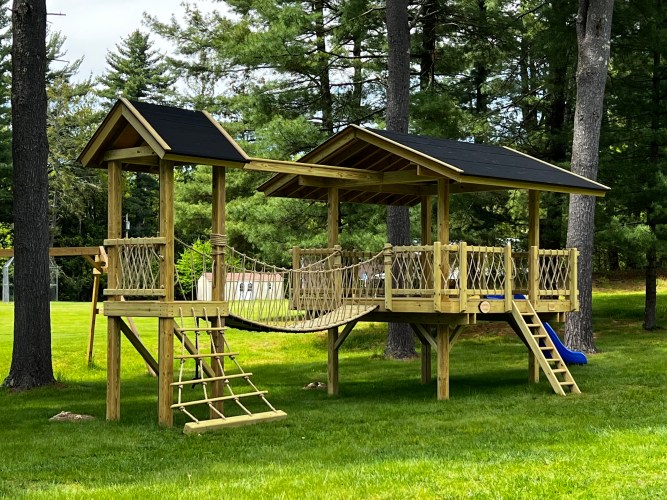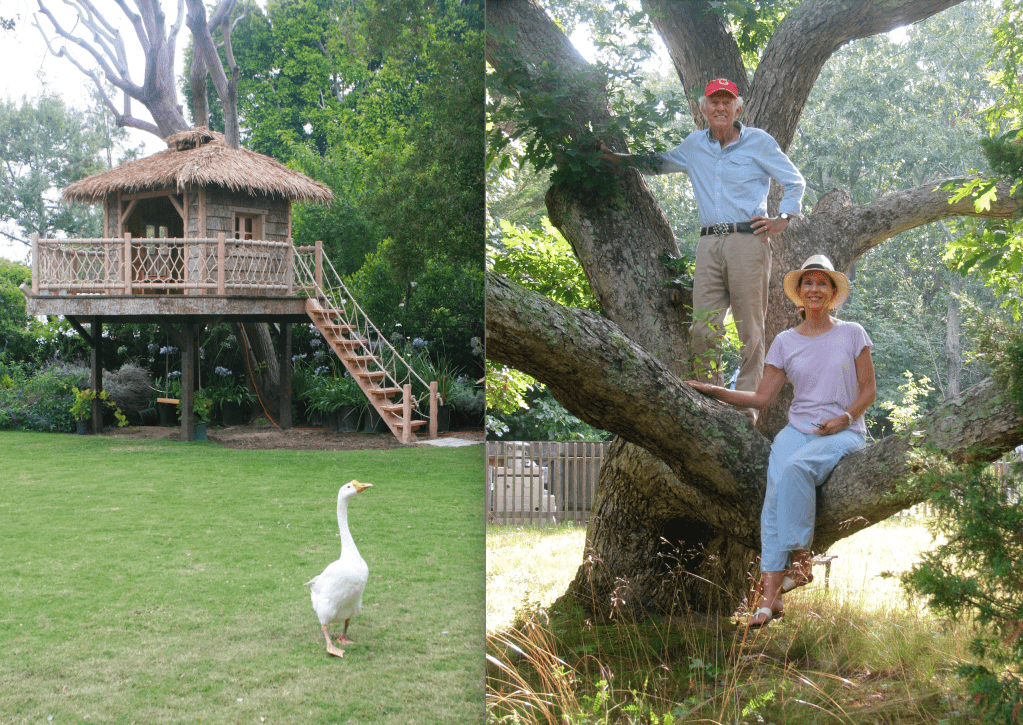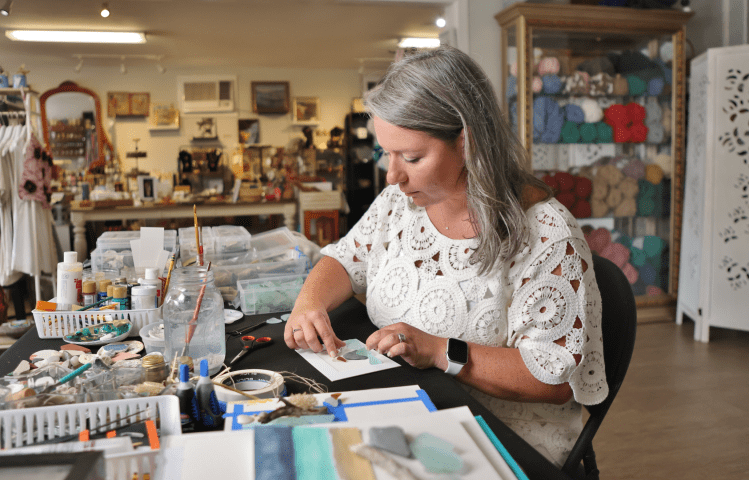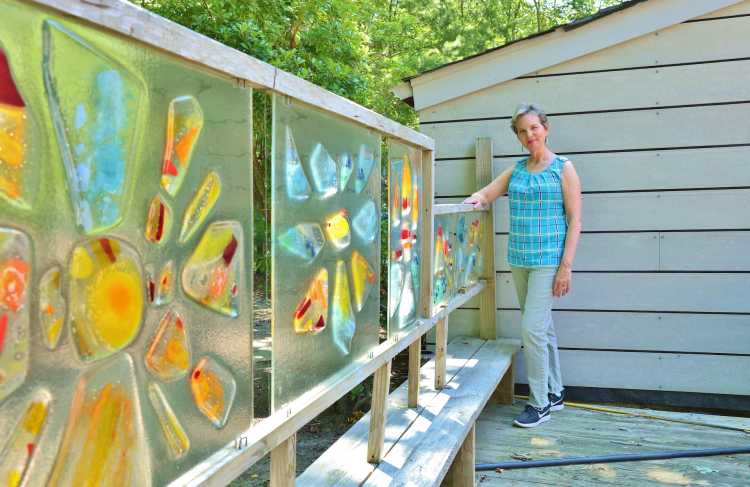David and Jeanie Stiles, it could be said, specialize in construction for upwardly mobile customers. But in their case, it’s people who like creating not tall buildings but structures high up — in trees.
The couple, based in Manhattan and East Hampton, have carved out an unusual niche, building tree houses or variations which they sometimes call “Hobbit houses” on the ground for middle-class and high-end customers.
They built a treehouse on and for The Today Show and have built for the well-known and wealthy, as well as more typical customers, typically charging $15,000 and up.
“We’ve done tree houses near the ocean in East Hampton and the general village area and some further up island, in Huntington,” says Jeanie. “We’ve done them all over. We’ve even done them in California.”
Their company, Stiles Designs, specializes in top-notch tree houses, typically eight to 10 feet wide and long. Often, these tree-top abodes even have electricity.
“We don’t do treehouses with plumbing. We’re not making a full house on stilts. We’re in it for kids of all ages to enjoy,” Jeanie explains. “You can get up in the trees and be with nature and get away from computers and everything on earth below.”
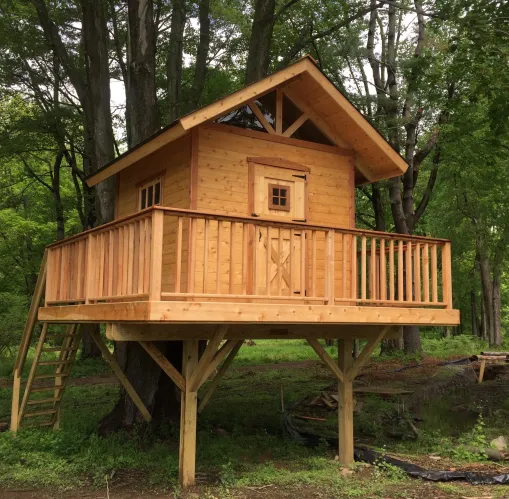
Everybody Loves a Treehouse
People work, meditate and otherwise spend time in treehouses, enjoying the view, the outdoors and the special privacy that comes with being surrounded by sky.
“We built treehouses for somebody in East Hampton who doesn’t have kids,” Jeanie recalls. “He likes to go up there, do his work, and look at the ocean.”
They interview clients, then design and build based on feedback with features their clients prefer. The structures may be high up, or even close to or on the ground. The builds can include ladders, hand railings, stairs or rope ladders — always in compliance any local regulations.
“Everybody loves a treehouse,” says David of the wide cross-section of clients. “What a great way to spend a life —building treehouses!”
Perhaps the most important item on their to-do list when starting a project is to make sure the tree is healthy. Treehouses can also be built with supports, such as poles, instead of relying just on the tree.
They typically use pressure-treated lumber, black locust wood or cedar, as in a treehouse they’re currently building in Springs. They sand, sometimes creating posts or railings and use shingles ranging from asphalt to cedar, depending on budget.
And they smooth and finish the wood carefully, “so you don’t get splinters when you climb up,” Jeanie explains of treehouses designed to blend with nature.
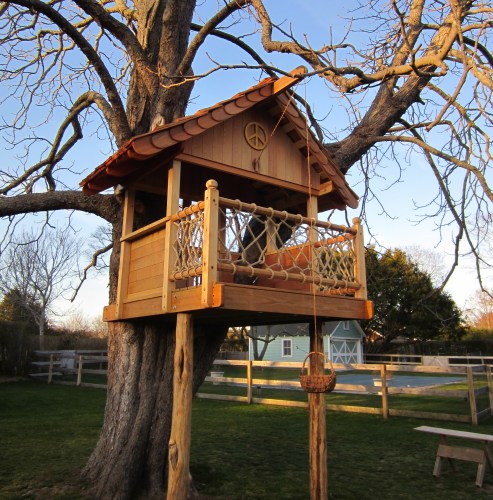
“We want it to look like part of the tree,” David says of choices of wood.
Just like any architect or builder, they have signatures in terms of style that let you know this is a Stiles treehouse, such as decks with rope railings providing safety without spoiling views.
Deciding the height is a key part of the process. They have built treehouses 20 feet up, as well as structures on or just feet from the ground. They say you don’t need a lot of height to get the feeling of freedom.
“We tell people, the feeling of being in a tree house isn’t how high you are,” Jeanie says. “It’s just being above the ground. Up eight feet, you get the same feeling.”
They name some of their designs, such as “the moon house,” built on a hill and used as a spa for yoga and meditation.
“They wanted a place they could go to early in the morning before they start stressing out and at the end of the day,” Jeanie notes.
Treehouses come basic or fancy with features like a thatched roof “that’s time-consuming with a lot of work like sanding and details,” Jeanie says. They can design curved windows or doors, which also are labor-intensive.
The couple even built a treehouse with a tree growing through the middle.
But, any feature can be basic or elegant. “You can make the stairs beautiful or simple,” Jeanie adds.
“It depends how far you want to go.”
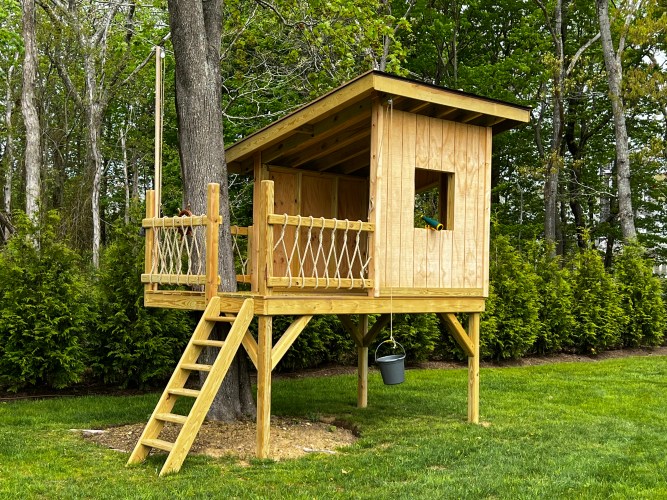
The Love of Treehouses
David fell in love with treehouses as a boy at home and then when he went to camp in Vermont, where treehouses were part of the culture.
“When I was a kid, I started building treehouses, trying to copy my big brother who built a platform in the trees,” he says. “I went to a camp where each cabin had their own tree house. I kept on building treehouses at the camp. That sort of got me started.”
He studied to be an industrial designer at the Pratt Institute of Technology, built one and then another, and soon carved out treehouses as his territory.
The couple also builds houses on the ground, such as a “Hobbit house” with a round door and colors to jazz it up. Owners recently used a forklift to move one further into the woods.
“It’s not in a tree, but it’s raised from the ground and it’s surrounded by pretty trees with ivy growing on it,” Jeanie says. “So you feel almost as if you are in a tree.”
They also design and build furniture, often with the same type of wood used for the treehouse. The Hobbit house, for instance, includes chairs, stools and shelves made from wood designed to match the house.
“We’re making a cool pulley with a bucket,” Jeanie says of a pulley system that can carry food and other objects. “David is hand carving a piece of wood shaped like a giraffe head to hold the pulley in the mouth.”
David sees a bucket as, if not standard, a practical way to transport objects up to treehouses. “Parents come out and give them lunch,” he says. “They want to pull it into the tree house instead of walking it up. It’s a supply line.”
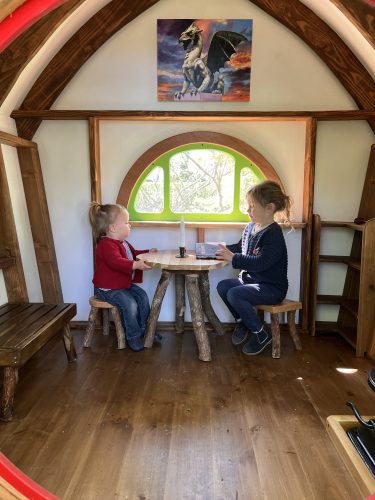
A Place to Be Creative
Treehouses are not only an expansion of homes but also provide a new, peaceful private place to think, relax, rest and even work or be creative.
“If you’re writing a book, it’s a great place to go. It’s also a place we found people go to meditate and not be bothered,” Jeanie says. “Maybe a painter doing watercolors. Or having wine or coffee.”
While you can hire them, they also wrote 27 books about how to build things, including half a dozen on tree houses, including Treehouses & Playhouses You Can Build.
“We’ve written more books about building a treehouse than anyone else, as far as we know,” David says.
Armed with a book, people can build or get someone else to build a treehouse, although they need to pay attention to safety as well as scenery.
“We’re into showing people they can build things themselves,” Jeanie adds. “If they don’t want to use our services, we can give them plans and show them how to build things.”
Parents sometimes give treehouses as birthday presents or gifts in general, as was the case with the Peace Treehouse they built in Amagansett with a peace sign toward the top. They finished building the treehouse, complete with scalloped shingles that made it look like a cake, a day before a girl’s birthday when the parents drove her to Amagansett from New York City.
“The girl woke up, looked in the backyard and saw the treehouse. She couldn’t believe it,” Jeanie says. “It was a big hit. It was like Santa had arrived and dropped it on the tree.”
This article appeared in the Sept. 20, 2024 issue of Behind The Hedges inside Dan’s Papers. Read the full digital edition here. For more Master Craftsman columns, click here.
